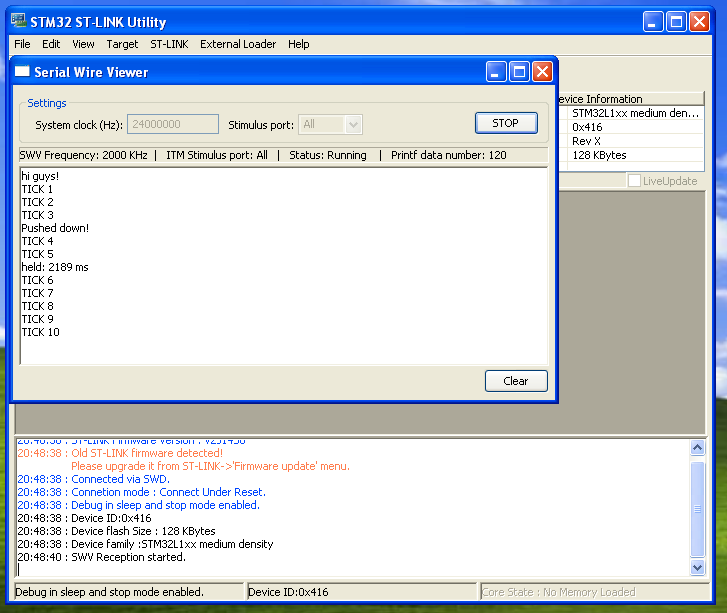Note: The following probably applies to the arduino UNO as well, as it also uses an onboard atmega 8u2, rather than the old raw serial converter.
Part 1 of probably many. I’ve inherited some arduino code, targetting the quite new mega2560 boards. You know, the ones that include an onboard atmega8u2, rather than the original old serial adapters. In many ways, this is a welcome step into the future. Anyway, this place doesn’t even have a regular AVR ISP programmer, and with the onboard real usb, the code running on the 8u2 is actually effectively an AVR ISP programmer itself, talking the stk500 protocol.
I am trying to move some of this code slowly out of the arduino IDE, and towards a more standard shared tree of c/c++. I have mostly succeeded in building plain hex files from the command line, based on arduino libraries (for things like LiquidCrystal and Ethernet and so on) but was having problems getting them to program. By editing arduino’s “preferences.txt” and adding “upload.verbose=true” I could see that when programming from the arduino IDE, it was using a private patched version of avrdude (5.4-arduino) with the programmer type of stk500v2, and that it was issuing a reset, via some sort of DTR toggle…
c:\tools\arduino-022\hardware/tools/avr/bin/avrdude -CC:\tools\arduino-022\hardware/tools/avr/etc/avrdude.conf -v -v -v -v -cstk500v2 -p atmega2560 -P COM5 -b 115200
... version stuff ...
Using Programmer: stk500v2
Overriding Baud Rate: 115200
avrdude: ser_open(): setting dtr
avrdude: Send: . [1b] [20] . [00] . [03] . [0e] . [11] . [01] . [01] ' [27]
Ok, so now I had enough to try and run it myself, using avrdude 5.10, as comes with recent versions of WinAVR
C:\Users\karlp>avrdude.exe -p atmega2560 -P COM5 -c stk500v2 -v -U lfuse:r:-:h -b 115200
---snip---
avrdude.exe: stk500_2_ReceiveMessage(): timeout
avrdude.exe: stk500_2_ReceiveMessage(): timeout
But, as you can see, this just timed out. Looking at the LEDs, I could see that the board wasn’t getting magically reset. With a bit of reading and searching, I found out that avrdude added a way of resetting the board, if you use the programmer type of “arduino”
Using Programmer : arduino
Overriding Baud Rate : 115200
avrdude.exe: Send: 0 [30] [20]
avrdude.exe: Send: 0 [30] [20]
avrdude.exe: Send: 0 [30] [20]
Interesting, following the lights on the board, I could see that this was now resetting properly, but clearly, those were not the right commands. It seems that the “arduino” programmer type, is set up to talk to the bootloader on the atmega328 of the prior versions of arduino, the Duemilanove and so on, that still had a direct USB-serial bridge, from the FTDI chip. So, if the “arduino” programmer does the reset, but the wrong protocol, looks like I’ll have to reset it myself.
I finally tried holding reset on the board, issuing the command with the programmer of “stk500v2” and immediately releasing reset. Presto!
C:\Users\karlp>avrdude.exe -p atmega2560 -P COM5 -c stk500v2 -v -b 115200
... more snipped ....
Programmer Type : STK500V2
Description : Atmel STK500 Version 2.x firmware
Programmer Model: AVRISP
Hardware Version: 15
Firmware Version Master : 2.10
Vtarget : 0.0 V
SCK period : 118.3 us
avrdude.exe: AVR device initialized and ready to accept instructions
Reading | ################################################## | 100% 0.03s
avrdude.exe: Device signature = 0x1e9801
... more snipped ...
Hooray! we’re working from the command line again. Now, if only the arduino gang’s pile of extra patches for avrdude would keep making their way back into mainline. It seems they don’t play well with others :(
